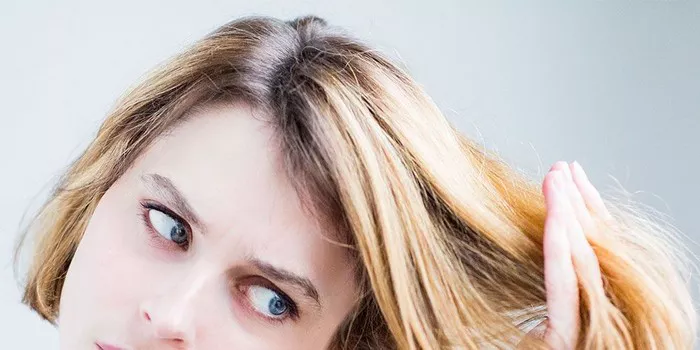Seasonal hair shedding, particularly in autumn, is a common phenomenon that many people experience. It can be alarming to see more hair in your brush or shower drain, but understanding the reasons behind this seasonal change can help alleviate concerns. This article delves into the science of autumn hair shedding, how long it typically lasts, and what you can do to manage it.
The Science Behind Hair Shedding
The Hair Growth Cycle
Hair growth occurs in cycles, and understanding these cycles is key to comprehending why hair shedding happens. The hair growth cycle consists of three main phases:
Anagen Phase: This is the active growth phase, lasting anywhere from two to seven years. Approximately 85-90% of hair follicles are in this phase at any given time.
Catagen Phase: This transitional phase lasts about two to three weeks. The hair stops growing and detaches from the blood supply.
Telogen Phase: This is the resting phase, lasting about three months. At the end of this phase, hair naturally falls out and is replaced by new hair growth.
Seasonal Shedding
Autumn hair shedding is part of a larger pattern known as seasonal shedding. Research suggests that humans, like many animals, experience increased hair shedding during certain times of the year. The peak of this shedding often occurs in late summer and early autumn. This can be attributed to evolutionary factors where, historically, humans might have grown thicker hair for protection against the sun and shed it when the need decreased.
How Long Does Autumn Hair Shedding Last?
Typical Duration
Autumn hair shedding usually lasts between two to four months. This period aligns with the natural telogen phase of the hair growth cycle. During this time, it is not uncommon for individuals to lose up to 100 hairs per day, although this number can vary.
Individual Variations
The duration and extent of autumn hair shedding can vary significantly among individuals. Factors that influence this include:
- Genetics: Your genetic makeup plays a crucial role in determining your hair growth cycle and shedding patterns.
- Hormones: Hormonal changes, particularly in women, can affect hair shedding. For example, postpartum women may experience increased shedding.
- Health: Overall health, including nutrition and stress levels, can impact the hair growth cycle.
Managing Autumn Hair Shedding
Maintaining a Healthy Diet
A balanced diet rich in vitamins and minerals is essential for healthy hair growth. Key nutrients include:
- Biotin: Found in eggs, nuts, and seeds, biotin is crucial for hair health.
- Vitamin D: Exposure to sunlight and consuming foods like fatty fish can help maintain optimal levels of vitamin D, which is important for hair follicles.
- Iron: Iron deficiency can lead to increased hair shedding. Red meat, leafy greens, and legumes are excellent sources of iron.
Reducing Stress
Stress is a significant factor that can exacerbate hair shedding. Practices such as yoga, meditation, and regular exercise can help manage stress levels and promote overall well-being.
Gentle Hair Care Practices
Adopting gentle hair care practices can minimize additional hair loss during the shedding season. These include:
- Avoiding excessive heat styling: High temperatures from blow dryers, straighteners, and curling irons can damage hair.
- Using a wide-tooth comb: This reduces tugging and breakage, especially when detangling wet hair.
- Opting for gentle shampoos and conditioners: Products free from harsh chemicals can prevent scalp irritation and hair damage.
When to Seek Professional Advice
Persistent Shedding
If hair shedding continues beyond the typical two to four months or if you notice significant thinning, it may be time to consult a dermatologist or trichologist. They can assess your scalp and hair health, identify any underlying conditions, and recommend appropriate treatments.
See Also: How to Stop Hair Loss from Malnutrition: A Complete Guide
Sudden Hair Loss
Sudden, drastic hair loss, known as telogen effluvium, can be triggered by various factors, including severe stress, illness, or nutritional deficiencies. Professional evaluation is essential to determine the cause and implement an effective treatment plan.
Treatments for Excessive Hair Shedding
Topical Treatments
Minoxidil: This over-the-counter treatment is often recommended for hair thinning and shedding. It works by prolonging the anagen phase of the hair cycle.
Corticosteroids: For cases of inflammatory scalp conditions, corticosteroid treatments may be prescribed.
Oral Medications
Finasteride: Primarily used for male pattern baldness, this medication can help reduce hair shedding by inhibiting the production of DHT, a hormone linked to hair loss.
Natural Remedies
Essential oils: Oils like rosemary, peppermint, and lavender have been shown to promote hair growth and reduce shedding when used regularly.
Scalp massages: Regular scalp massages can improve blood circulation to hair follicles, promoting healthier hair growth.
Conclusion
Autumn hair shedding is a natural and typically temporary phenomenon. Understanding the hair growth cycle and the factors that influence shedding can help you manage this seasonal change effectively. By maintaining a healthy lifestyle, adopting gentle hair care practices, and seeking professional advice when necessary, you can minimize the impact of autumn hair shedding and ensure your hair remains healthy and strong year-round.
Final Thoughts
While it can be concerning to see an increase in hair shedding, especially during autumn, it’s important to remember that this is a normal part of the hair growth cycle. Patience and proper care are key to navigating this period. If you have persistent concerns or notice significant changes in your hair density, consulting with a healthcare professional can provide peace of mind and appropriate solutions.
By taking proactive steps and understanding the natural rhythms of your hair, you can maintain a healthy scalp and hair throughout the year, ensuring that seasonal shedding remains a manageable aspect of your hair care routine.


